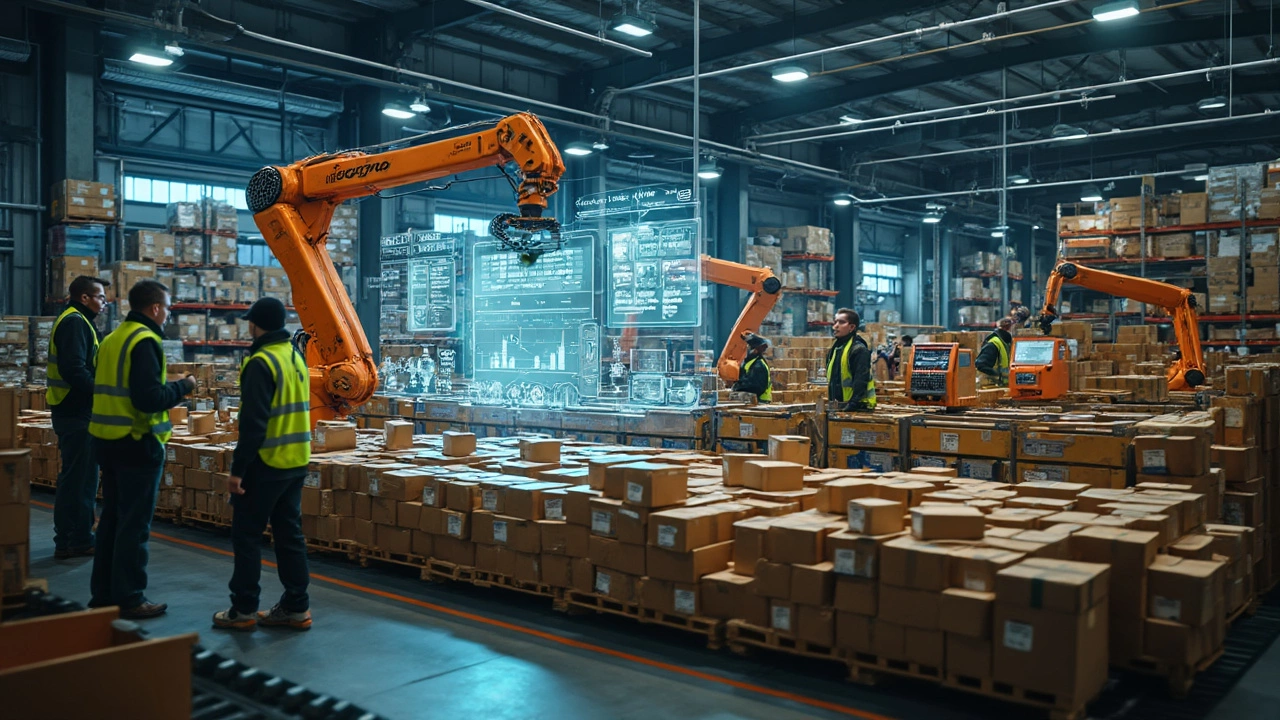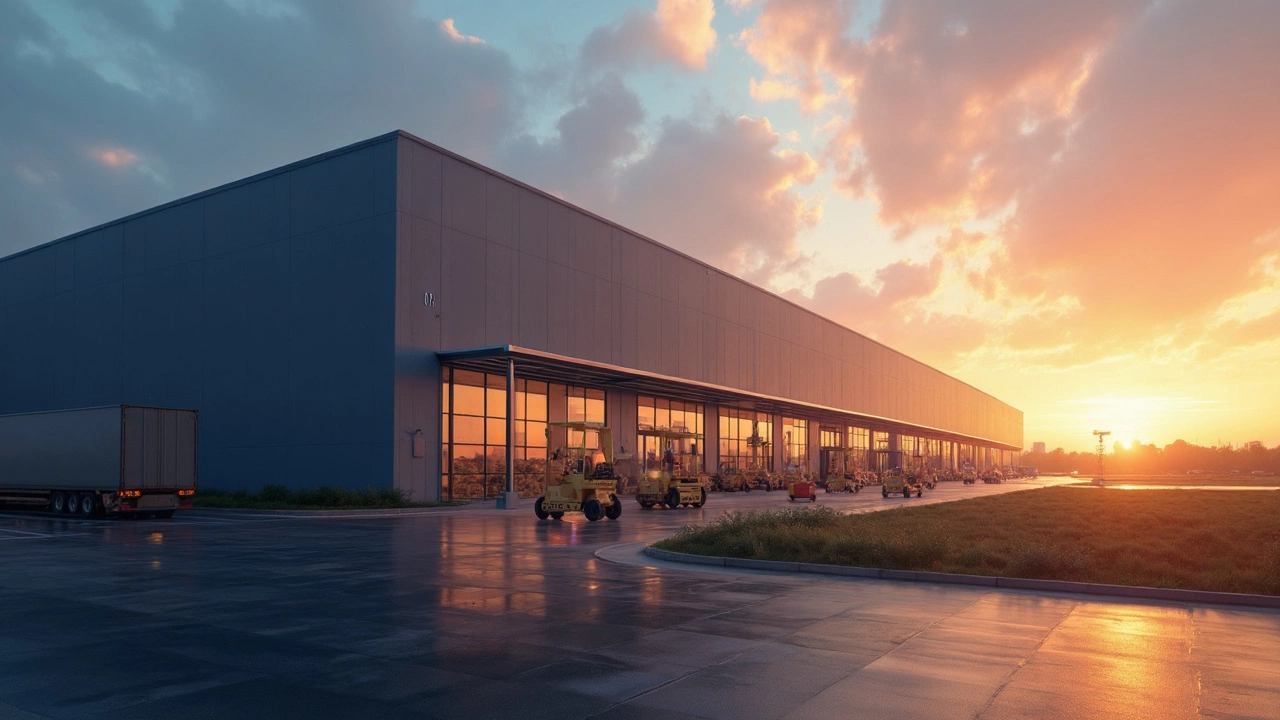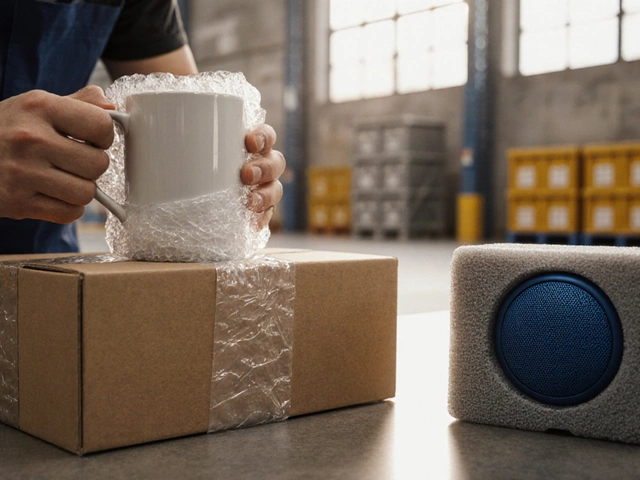Amazon is a big name when it comes to online shopping. But have you ever wondered if they actually own the warehouses they use to store all those products? It's not a straightforward yes or no. Amazon employs a mix of owning and leasing when it comes to warehouses. This hybrid approach allows them flexibility in scaling operations based on market demands.
Why mix it up? Owning gives Amazon control over the location and design of a warehouse, which can be crucial for optimizing logistics. But leasing offers flexibility, especially when testing new markets or scaling operations quickly. Plus, leasing can mean less upfront capital investment, freeing up cash for Amazon to invest in other areas, like their cutting-edge logistics software.
Now, why does this matter for logistics? Well, the type of control Amazon has over its facilities can influence how it develops and utilizes logistics software. With ownership, they might implement more tailored software solutions that align precisely with their operational needs. On the flip side, leasing might necessitate more adaptable solutions that can be integrated into a variety of existing infrastructures.
- Amazon's Warehouse Ownership
- Leasing vs. Owning: Pros and Cons
- Impact on Logistics Software
- Future Trends in Amazon Logistics
Amazon's Warehouse Ownership
Diving into whether Amazon actually owns its warehouses reveals an interesting mix of strategies. Amazon uses a hybrid model, owning some facilities outright while leasing others. This approach isn't random; it’s all about strategic flexibility and efficiency.
Amazon owns approximately 40% of its warehouses. Owning a location gives Amazon complete control over how the spaces are utilized, designed, and even where they are positioned. These owned spaces often serve as key hubs in Amazon's mammoth distribution network. For example, major developing areas near metropolitan zones often see Amazon investing in ownership to secure a central logistics point.
Why Lease?
So why lease at all? Leasing makes good business sense in volatile or emerging markets. Leasing allows Amazon to enter a new area swiftly without a massive initial investment. They can then adapt to short-term or seasonal demands without being tied down to property permanence and associated costs.
Another factor is flexibility. As e-commerce trends shift, so do logistics needs. Amazon, via leasing, can quickly pivot its operations base to meet these trends, especially in less predictable markets and regions.
Factors Influencing Ownership
A few major factors drive Amazon's decisions between owning and leasing:
- Market demand and stability
- Proximity to major customer bases
- Cost and financial flexibility
- Long-term strategic importance
Amazon is always on the lookout to optimize efficiency. Owning facilities near major urban centers reduces delivery times, showing why it's sometimes a more attractive option despite higher initial costs.
Here's a quick breakdown of how owning versus leasing plays out:
| Aspect | Owning | Leasing |
|---|---|---|
| Control | High | Moderate |
| Flexibility | Low | High |
| Initial Investment | High | Low |
| Strategic Stability | High | Variable |
Ultimately, both owning and leasing play vital roles in ensuring Amazon’s logistics network not only survives but thrives in a competitive landscape. It's a nifty balancing act that keeps Amazon on the frontline of e-commerce logistics.
Leasing vs. Owning: Pros and Cons
When it comes to Amazon's warehouses, the decision between leasing and owning isn't just about dollars and cents. Both choices come with their own sets of perks and challenges.
Advantages of Leasing
Leasing offers big flexibility. For a giant like Amazon, this means they can quickly expand into new areas without committing to long-term investments in real estate. Say there's a sudden surge in demand somewhere; leasing lets them set up shop pronto and test the waters.
- No hefty upfront costs, which can free up cash for other priorities like technology and logistics software.
- The ability to walk away if things don’t pan out as expected or if strategic priorities shift.
- In some cases, leased facilities come with services like maintenance and security, easing operational burdens.
Advantages of Owning
On the flip side, owning a warehouse provides a different kind of power—control. With ownership, Amazon gets to decide how things run from top to bottom, which aligns well with optimizing their logistics efficiency.
- The ability to tailor warehouse design and infrastructure to specific logistical needs and technological innovations, enhancing efficiency.
- No ongoing rent payments mean potential savings over time, especially in high-demand areas.
- Real estate appreciation can be an added financial boon.
Challenges in Both Approaches
Of course, neither option is without its hurdles. Leasing might mean dealing with landlord restrictions or yearly rate hikes. On the other hand, owning requires significant upfront capital and exposes Amazon to market risks of property values dropping.
In a nutshell, Amazon seems to have struck a balance between the two, optimizing their logistics game by mixing leasing with strategic purchasing. This blend lets them stay nimble, scale smartly, and continuously refine their cutting-edge logistics software.

Impact on Logistics Software
When it comes to Amazon's logistics operations, their choice of owning versus leasing warehouses isn't just a real estate decision—it's a strategic move that directly influences their logistics software. This software plays a crucial role in keeping up with the high-speed operations Amazon is known for.
Customization and Control
Owning warehouses gives Amazon a playground for innovation. They can tailor-make the facility's layout and technology to fit perfectly with their custom logistics software. This level of customization allows for seamless automation processes, which leads to faster and more efficient order fulfillment.
With ownership, Amazon can integrate features such as robot-assisted picking systems and advanced inventory tracking directly into their warehouse operations. This synergy helps reduce errors and speeds up the entire shipping process, reflecting in their promise of speedy deliveries.
Flexibility with Leasing
On the other hand, when Amazon leases, they need software that can quickly adapt to existing structures. Here, the focus shifts to flexibility and scalability.
Amazon ensures their logistics software can easily plug into leased facilities, maintaining efficiency while adapting to various layouts and scales. This adaptability is essential when opening temporary distribution centers during high-demand periods.
Software Innovation Drives Efficiency
Amazon isn't just reacting; they're innovating. Their logistics software is at the heart of what allows them to operate at such an unimaginable scale.
By investing in AI and machine learning, Amazon forecasts demand with remarkable accuracy. This anticipation allows them to pre-stock products in the right locations, significantly cutting delivery times.
Furthermore, innovations like their Kiva robots, which were acquired by Amazon in 2012, highlight how their software integrates with and enhances physical operations. These robots help streamline operations, saving human workers crucial time.
Behind all this innovation is the core understanding that whether leasing or owning, integrating cutting-edge logistics software remains crucial for efficiency.
Future Trends in Amazon Logistics
The future of Amazon logistics looks exciting and full of innovation. With technology evolving at a rapid pace, it's only natural that Amazon, being the tech giant it is, will integrate advanced technologies into its logistics operations.
The Role of Robotics and Automation
Amazon is already known for using robotic systems in its warehouses, and this trend is set to grow. More automation means faster picking and packing, reducing delivery times. This isn't just about robots doing jobs faster; it's about optimizing the whole supply chain. Automation can help Amazon keep up with increasing demand without constantly adding more staff.
Drone Deliveries on the Rise
Drones have been a buzzword for a while, but Amazon is serious about them. It's working on using drones for faster deliveries, especially for last-mile delivery in urban areas. Imagine ordering a book and having it delivered by a drone in 30 minutes! While there are regulatory hurdles to overcome, testing is underway, and we might see practical implementations soon.
Enhancing Logistics Software
Amazon's logistics software is world-class, but there's always room for improvement. As warehouses become more tech-driven, software will need to be more sophisticated. Machine learning and AI could improve demand forecasting, inventory management, and route optimization. Efficient software means Amazon can potentially deliver more orders in less time, ensuring happier customers.
Sustainability in Focus
With more attention on environmental impact, Amazon's logistics will likely prioritize sustainability. This could mean more electric delivery vehicles or investing in eco-friendly packaging. By making operations greener, Amazon can cut down on emissions and appeal to environmentally-conscious consumers.
Robust Data Capabilities
Amazon has tons of data, and using it effectively can drive additional efficiencies. Insights from data analytics can inform location decisions for new warehouses or enhance supply chain visibility. Better data means Amazon can make quicker, more informed decisions—an invaluable advantage in logistics.





